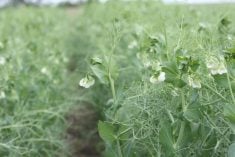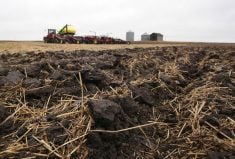Pulse crops have made a major contribution to reducing potential greenhouse gas emissions from western Canadian farmland.
But it might not be in the way farmers think, said University of Manitoba soil specialist Mario Tenuta.
The biggest impact has come from allowing farmers in arid regions to avoid summerfallow.
“The impact of including a new crop, pulses, is way more important than no-till (in terms of sequestering carbon in the soil,)” Tenuta told farmers at Manitoba Ag Days.
Many today recall summerfallow, which has almost entirely disappeared, as being a strategy solely focused on loading dry soils with enough moisture to support a healthy crop the next year.
Read Also

Gene editing digs deeper space in Canadian plant breeding
More Canadian research into crop variety development is incorporating gene editing, and one researcher notes that Canada’s regulatory approach to gene editing will help drive innovation
But farmers also engaged in summerfallow practices to boost crop yields by allowing for natural nitrogen production through mineralization and other mechanisms within the soil. That worked, but also led to nitrogen losses in non-cropping years, adding to the overall emissions intensity of that land.
When pulses were brought into rotations, farmers were more able to switch to continuous cropping, especially when combined with no-till practices. No-tilling helped reduce nitrogen leakage from soil, but the continuous cropping sucked up nitrogen that would otherwise have been lost.
Studies have shown that adding pulse crops into a rotation improves both overall crop production and protein production, something that boosts profitability for farmers.
With the federal target of reducing emissions from fertilizer use becoming more of a focus, it’s easy to forget how gigantic the contribution of pulse crops are today in reducing potential nitrogen emissions.
The amount of nitrogen produced by pulse crops, soybeans and other legumes replaces an enormous amount of nitrogen fertilizer that would otherwise have to be applied.
“There is as much nitrogen fixed by legumes in Canada as the entire use of fertilizer nitrogen in Saskatchewan,” Tenuta said.
















